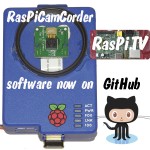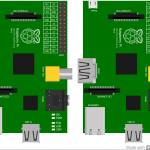
A few people have been asking me about the RasPiCamcorder software. My original plan was to partner with a well known supplier and offer a “build your own RasPiCamcorder” kit, along with software and instructions, as a product. The software was always going to be open sourced though. But the market said NO! Many people have argued with the market and lost. I don’t intend to. There simply weren’t many takers for it. Cool though it is to be able to Dropbox your photos and videos, having neither sound nor screen seems to be enough […more…]








